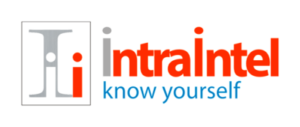It’s a harsh headline – but not an exaggeration.
Across industries, automation and AI are accelerating at a pace that’s quietly rendering large segments of the workforce obsolete. Skills that were in-demand just five years ago are now being replaced by algorithms, bots, and predictive systems.
And the scariest part? Most organizations won’t realize it until it’s too late.
But here’s the good news: AI isn’t just the cause of this disruption – it’s also the solution.
If you act now.
The smartest L&D and HR leaders aren’t waiting for a reskilling crisis to hit. They’re using AI proactively to identify gaps, upskill talent, and prepare employees for the future of work – before that future becomes a layoff list.
Here’s how to avoid becoming the next headline.
- The Skills Gap Is Already Here – It’s Just Not Evenly Distributed
You might think your team is future-ready because they’ve completed mandatory training or have solid domain experience.
But let’s zoom out.
AI is reshaping job roles in subtle ways:
- Project managers are expected to analyze data and automate workflows
- Customer service reps are working alongside AI chatbots and need escalation judgment
- Marketers now use AI tools to generate content, analyze sentiment, and test campaigns
If your workforce isn’t equipped to collaborate with or leverage AI tools, their productivity – and relevance – is already declining.
The solution? Build AI literacy across every role, not just IT.
- AI Can Diagnose Skill Gaps Before They Become Business Risks
Traditional skill assessments are slow, static, and surface-level.
Today, AI-powered platforms can:
- Continuously track learner performance
- Compare workforce skills against industry benchmarks
- Predict which employees are likely to fall behind
- Recommend custom learning paths automatically
Why wait for performance reviews to reveal issues when AI can flag them early – and fix them fast?
Use AI not just to deliver learning – but to detect and design it with precision.
- Upskilling at Scale Is No Longer Optional
The cost of inaction is brutal:
- Longer time-to-productivity
- Increased churn as employees feel unsupported
- Risk of irrelevance in competitive markets
Yet many organizations still treat learning as a once-a-year event or a compliance checkbox.
Smart companies are embedding AI-powered learning in the flow of work – delivering bite-sized, role-specific training based on real-time needs.
Think:
- AI-curated microlearning libraries
- Skills-based routing of content in an LXP
- Adaptive learning journeys that evolve with the learner
- Use AI to Coach, Not Just Train
Most companies focus on knowledge delivery. But real transformation happens through coaching and feedback.
AI tools now offer:
- Automated feedback on assignments or simulations
- Real-time suggestions during task execution
- Sentiment analysis to flag disengagement or confusion
This turns your learning experience from passive to performance-driven.
Your workforce doesn’t just need new knowledge – they need reinforcement, context, and accountability. AI gives you that at scale.
- Act Now – Because Waiting Comes with a Cost
If you’re thinking, “We’ll deal with this in next year’s strategy,” you may already be behind.
Your competitors are already:
- Running skills audits with AI
- Building internal talent marketplaces
- Replacing stagnant roles with agile, upskilled teams
In this climate, speed matters more than perfection.
You don’t need a complete overhaul – you need a clear, AI-augmented reskilling plan, starting today.
Final Thought
Your workforce isn’t doomed. But it is evolving – and fast.
AI will not wait for you to catch up. But it will help you leap forward – if you stop fearing it and start using it.
The future isn’t man or machine. It’s humans who know how to use AI outperforming those who don’t.
So ask yourself:
Is your workforce AI-proof? Or just waiting to be replaced?
Because in 2025, the companies that win won’t be the ones with the biggest teams – they’ll be the ones with the smartest, most adaptable ones.
————————————————————————————
Need help designing an AI-powered upskilling roadmap for your organization? Let’s talk.

